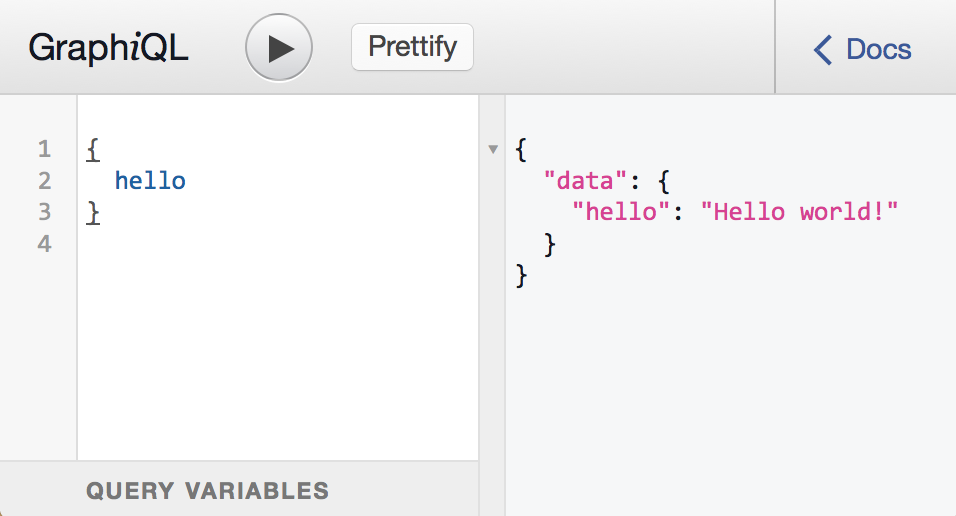 GraphQL
GraphQLRunning an Express GraphQL Server
The simplest way to run a GraphQL API server is to use Express, a popular web application framework for Node.js. You will need to install two additional dependencies:
npm install express express-graphql graphql --save
Let's modify our “hello world” example so that it's an API server rather than a script that runs a single query. We can use the 'express' module to run a webserver, and instead of executing a query directly with the graphql function, we can use the express-graphql library to mount a GraphQL API server on the “/graphql” HTTP endpoint:
var express = require("express")var { graphqlHTTP } = require("express-graphql")var { buildSchema } = require("graphql")
// Construct a schema, using GraphQL schema languagevar schema = buildSchema(` type Query { hello: String }`)
// The root provides a resolver function for each API endpointvar root = { hello: () => { return "Hello world!" },}
var app = express()app.use( "/graphql", graphqlHTTP({ schema: schema, rootValue: root, graphiql: true, }))app.listen(4000)console.log("Running a GraphQL API server at http://localhost:4000/graphql")
You can run this GraphQL server with:
node server.js
Since we configured graphqlHTTP with graphiql: true, you can use the GraphiQL tool to manually issue GraphQL queries. If you navigate in a web browser to http://localhost:4000/graphql, you should see an interface that lets you enter queries. It should look like:

This screen shot shows the GraphQL query { hello } being issued and giving a result of { data: { hello: 'Hello world!' } }. GraphiQL is a great tool for debugging and inspecting a server, so we recommend running it whenever your application is in development mode.
At this point you have learned how to run a GraphQL server and how to use GraphiQL interface to issue queries. The next step is to learn how to issue GraphQL queries from client code.